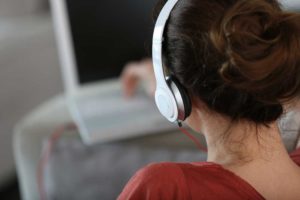One of the reasons online learning is so successful is because it is powerful enough to bridge time and distance, allowing colleges and universities to share education across borders to students all over the world. That valuable ability to time shift becomes even more important in the face of unexpected events. The recent travel ban, for example, has some schools advising students not to travel outside the U.S. as they may not be able to return to finish their education. In situations like this, colleges and universities are turning to unique video technology solutions to ensure learning isn’t disrupted.
Never Miss a Class in the Midst of Epidemics and Natural Disasters
Time shifting the learning process is not new.
During the H1N1 (swine flu) epidemic of 2009, online video learning was central to pandemic and academic continuity planning. When more than 2,000 students from the Washington State University system reported symptoms, the university took measures to stop the spread of the disease between campuses. Faculty at WSU Spokane used Mediasite online video technology to record lectures from home, and students watched from home. No one missed a class.
Similarly, universities and healthcare organizations were again in crisis mode last year during the Zika Virus outbreak. Schools turned to online video to deliver their messages about safety and preventative tips with the masses.
The same goes for when unpredictable natural disasters or inclement weather strike, like the California wildfires that forced California State University (CSU) Fullerton Department of Nursing and CSU San Marcos to cancel classes nearly a decade ago. Both schools turned to video technology to continue delivering instruction by capturing and streaming lectures online. CSU Fullerton Department of Nursing’s distance program is attended by working nurses, many of whom lived in areas threatened by fires and were unable to attend class.
“We didn’t want them to have to make a choice between leaving their homes and families–potentially having to evacuate–and coming to class,” recalled Marsha Orr, distance education faculty liaison in the Department of Nursing. “Because we are able to swiftly and easily capture the class and post it immediately to the web, it meant that the students didn’t lose any content. It meant not rescheduling. It meant not trying to double up on information.”
(Next page: Leveraging online video technology in the wake of a travel ban)
No-Boundaries Learning with Video
Not only are colleges and universities creatively turning to technology to keep classrooms running in times of trial, technology is democratizing learning around the world—even when policy may seem to hamper this progress. Sonic Foundry is honored to be a part of some inspiring global learning initiatives, for example:
Michigan Virtual University and Nigeria
1.2 million students in Nigeria qualify to begin college each year, but the country’s 104 universities can only accept 300,000 students. Infrastructure challenges in the country, such as unstable electricity, bandwidth problems and poor roads, don’t help. In response to the great demand for distance learning to make in-country education more accessible, Michigan Virtual University is supporting Nigeria’s first e-learning project. Using video technology and a mobile device, e-learning students at the Center for Distance Learning at Obafemi Awolowo University participate in lectures on campus or from anywhere. The university predicts more than 50,000 people annually will receive undergraduate and post-graduate degrees through this program.
Florida State University and Global STEM Education
Florida State University has an emphasis on global responsibility for education. Its desire to foster creativity and provide a free resource of educational material with skills and talents of people around the world led to the creation of Global Educational Outreach for Science, Engineering and Technology (GEOSET), a global network of participating sites that deliver exceptional downloadable STEM teaching materials created by the best science and technology experts and educators.
Goethe University and Indonesia
At Frankfurt, Germany’s Goethe University, graduate student Maya Tutughamiarso teaches an online high school chemistry class. She originally had difficulty connecting with her students, but not in the typical teenager versus adult way—they are on separate continents. She teaches the online class from Frankfurt while the students are in Indonesia.
Students aren’t just learning in classrooms, face-to-face with their instructors anymore. Academic video technology allows them, regardless of time and distance, to receive a high-quality education when and where it’s convenient for them. Having an academic video strategy means students will never miss a beat in the face of unexpected circumstances.

